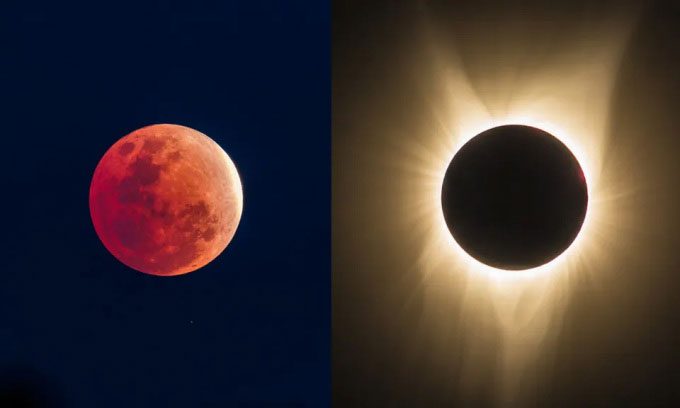The annular solar eclipse on October 14 and the partial lunar eclipse on October 29 are two notable astronomical events occurring this month.

Partial lunar eclipse (left) and annular solar eclipse (right). (Photo: Space/Getty)
Annular Solar Eclipse can be observed in eight states in the southwestern United States. This type of eclipse occurs when the Moon is slightly farther from the Earth than usual, causing it to appear smaller and unable to completely cover the Sun, thus leaving a “ring of fire” visible. Observers outside the annular phase can still view a partial solar eclipse, which will be visible across the entire United States, parts of Mexico, Central America, Colombia, and Brazil.
The next annular solar eclipse will occur on October 2, 2024. At that time, astronomy enthusiasts in the Pacific region and parts of South America will be able to see the ring of fire. However, before that, another exciting event will take place on April 8, 2024, which is a total solar eclipse. In fact, the upcoming annular solar eclipse is being utilized by scientists as a “kick-off” opportunity to conduct research on the atmosphere and solar corona during the total solar eclipse in 2024.
The partial lunar eclipse at the end of October can be observed across most of the Eastern Hemisphere, including Europe, Africa, Asia, Antarctica, and Oceania. During a partial lunar eclipse, the Moon will pass through the Earth’s shadow and appear darker than usual. The partial lunar eclipse will begin at 2:36 AM on October 29 (Hanoi time) and end at 3:53 AM.
This will be the second lunar eclipse this year, following the penumbral lunar eclipse in May. During a penumbral lunar eclipse, the Moon enters the outer shadow of the Earth, appearing dimmer but not disappearing. The next lunar eclipse will also be a penumbral lunar eclipse, expected to occur on March 25, 2024, and will be visible in the Americas.





















































